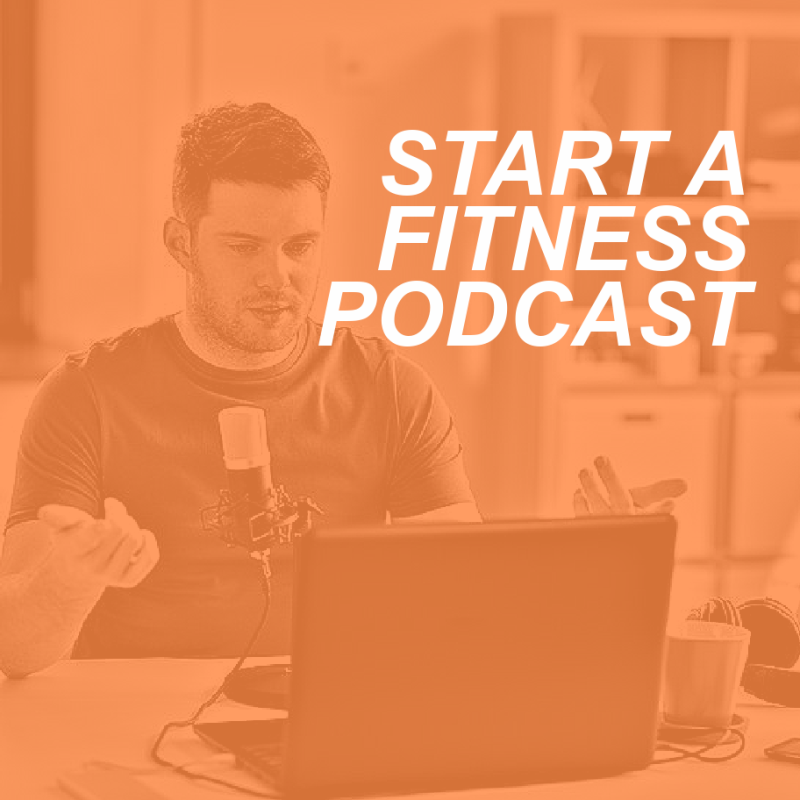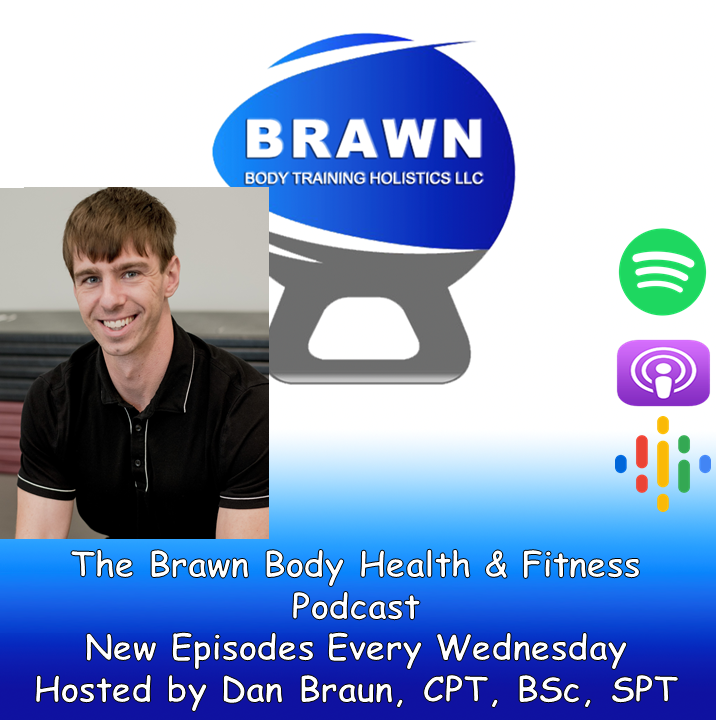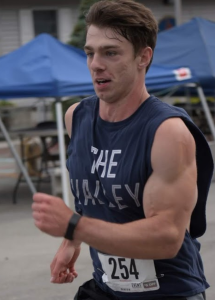
Podcasts are one of the quickest growing opportunities for fitness professionals to share their knowledge and expertise. Over 50% of Americans report listening to podcasts, and this number continues to grow1 . How can you start a podcast and start taking advantage of this new form of “internet talk show radio”? Moreover, how can you create a podcast that stands out amongst a sea of over 850,000 active podcast shows?
My Fitness Podcast Creation and Success
I started my podcast, the Brawn Body Health & Fitness Podcast, to complement my training business in March 2020. At the time, the covid-19 pandemic had just hit, and my college shut down. While many people sensed danger, I saw opportunity. I utilized the additional time to research natural anti-viral and anti-microbial biohacks, which became my first podcast episode.
I continued to take advantage of the opportunities emerging from lockdown, and posted episodes related to building home gyms, budget grocery hacks, how to avoid sedentary behavior at home, and more. To date, I’ve published 130 podcast episodes and had a wide array of guests on my podcast, ranging from collegiate athletes, a former MLB pitcher, physical therapists, strength and speed coaches, nurses, chiropractors, trainers, nutritionists, and even Michele Rogers, your NFPT blog editor!
How You Can Start a Fitness Podcast
There are very few barriers preventing you from doing the same thing. No, you don’t need a $500 microphone to start. No, you don’t need to spend hundreds of dollars per month on hosting and advertisement fees. Decide if you’ll start your podcast alone or with a partner, then start right now by following these steps.
- Pick your hosting platform. While dozens exist, I’m only focusing on the platforms which are free. I personally use and recommend anchor.fm, but soundcloud, podbean, and buzzsprout are also other free options. These each have their pros and cons. Focusing on anchor specifically, my podcast is available on iTunes, Spotify, Google, and many other major platforms such as Castbox, at no cost to me. I’m able to edit and schedule episodes, record from my laptop, tablet, or phone, and take advantage of the sponsorships they matched me with. That’s right, I get paid for every listener on my podcast!
- What’s your topic and target audience? Do you want your podcast to focus on exercise and personal training? Maybe a certain component of health, such as stress management? Or, would you like to start a broad themed “health and fitness” podcast like I did? Whichever you choose, make sure its something you like and can engage with! Podcast listeners cannot see you (unless you record via video and post), so they rely largely on tone of voice and diction. If you’re talking about something you’re passionate about, your excitement will translate. For this reason, I always control podcast topics and discussions to ensure I’m fully engaged, and recommend you do the same.
- Name your podcast. How will your podcast stand out? Will you do a play-on-words utilizing your name? Will you leverage a popular, trendy topic? You can quite literally choose anything. I decided on “Brawn Body” corresponding to my name and business, and “Health and Fitness” so my listeners would know what content to expect from my show.
- Outline your podcast episodes in advance. As John Wooden famously said, “Failure to prepare is preparing to fail.” I’ve attempted to record podcasts without any prep work, and ultimately ended up re-recording the entire episode over being unhappy about the outcome. Organize your thoughts ahead of time, create a natural flow to the episode, and add any relevant articles or references. This helps to reduce excessive pauses, and, hopefully, streamline your editing process.
- Record! Ensure you have a quiet area where you will not be interrupted. If you have a microphone – wear it! Even headphones with a mic plugged into a cell phone can make a huge increase in sound quality. Don’t be afraid to pause – remember, unless you’re live, you can edit the podcast before you post it! I record via Zoom if I have a guest online, or Audacity if in-person. Audacity is a free, easy-to-use online program that allows audio recording and editing.
- Edit. Again, I use Audacity for all my audio editing. It’s free, easy to use, and allows me to cut audio out, or add audio from other episodes as needed. Additionally, you can easily download and incorporate music into your episode while editing (make sure its copyright-free). You’ll likely need to listen to the full episode once or twice to ensure it flows to your liking. This is often the hardest part for me – I hate hearing myself talk despite listening to myself speak in countless podcast episodes!
- Get creative. What will you name your episodes? Also consider cover art–should you contract someone do it for you? This is always the last step of the “creation” process for me, as I like to match the episode name to the main topic and key points. I match the cover art to the episode title every time. I’ve found that this shares and looks best. My cover art includes my logo and a color fade concept. My designer also incorporated the Spotify, Google, and iTunes logos to show listeners where the podcast is available. If you’re not confident with design and creativity skills, I highly recommend befriending people who specialize in marketing and digital communications. Thankfully, I went to a college with a program for each of these, so this was straightforward. You could also try to leverage Canva, a free online design tool, to create logos and cover art.

- Should you invite guests? I mentioned that I’ve had a variety of guests on my show, but I did not really feel comfortable with this until I was 30-40 episodes in. I highly recommend taking time to get comfortable with the podcast process first, before looking for guests. Additionally, when booking a guest, mold the topic you want to discuss around their interests or wheelhouse. With that said – I’m more than happy to join any podcast as a guest!
- Share! Hopefully you have an audience pre-built, whether it be via social media, email, text, or another means. I always post every podcast to Instagram, which is my biggest audience. These posts automatically go to Facebook as well. I occasionally share episodes to Twitter, and most recently, Tiktok. The more people you reach, the more will listen! It often helps to have friends share the episodes on their social networks as well to increase reach.
In summary, podcasting is a relatively low-cost and easy way to share health and fitness knowledge across a wide audience. You might even profit from it! It does require some additional time and software skills. Despite this, I’ve found it very rewarding. Like anything, you will get out what you put into it!
 Author Bio:
Author Bio:
Dan Braun is a NFPT-CPT and 2020 graduate of Lebanon Valley College’s Exercise Science program. Braun is currently enrolled in LVC’s Doctor of Physical Therapy program and will graduate with his DPT in 2022. While in school, Dan runs his own training business which you can learn about and follow on Instagram and podcast (Brawn Body Health and Fitness Podcast, available on all major streaming platforms).
References:
- 39 Podcast Statistics: 2020/2021 Listener Numbers, Data & Predictions | CompareCamp.com





